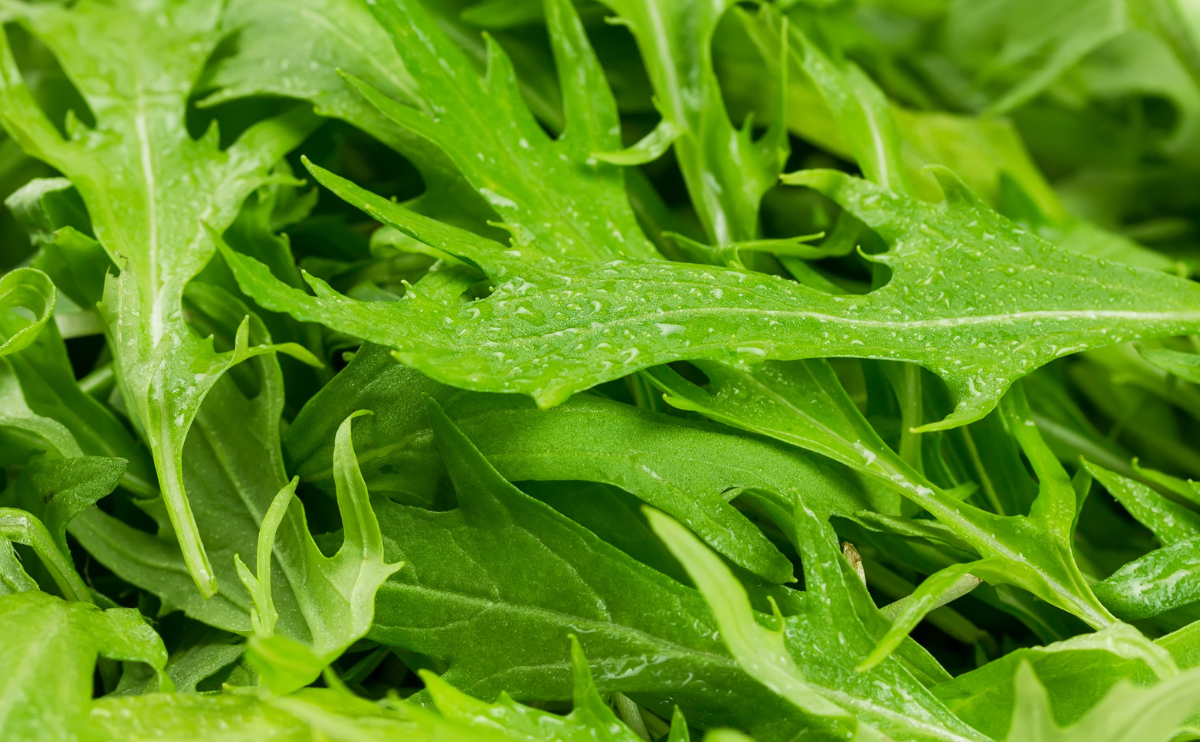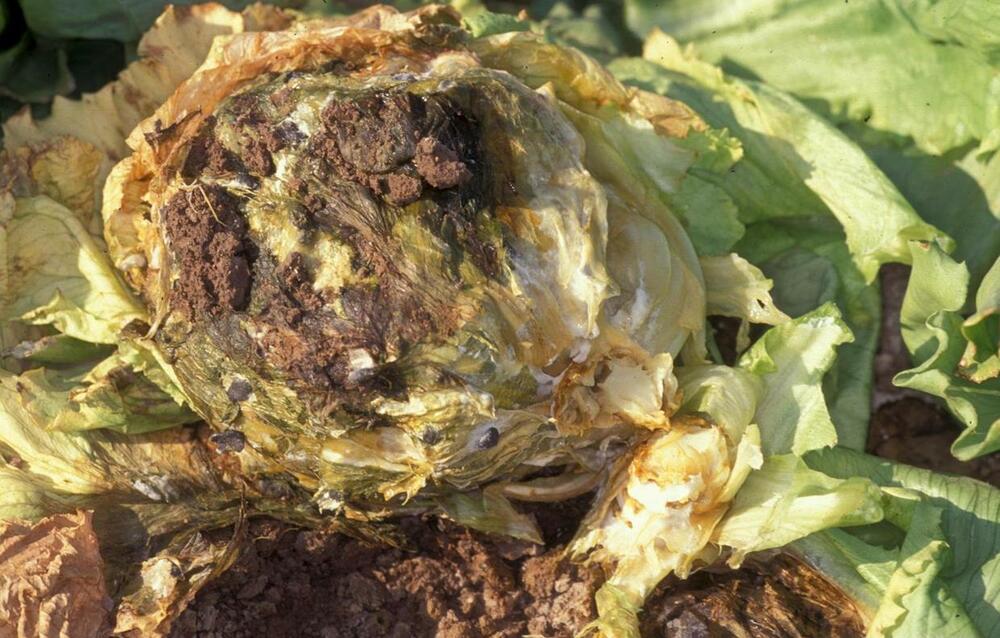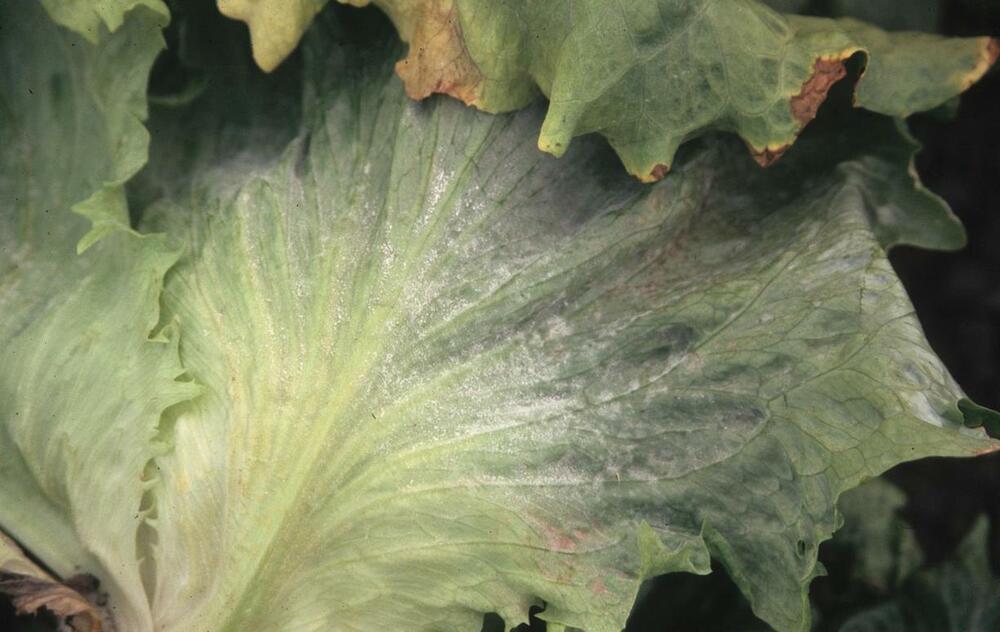Mizuna is a mild-flavored Japanese mustard that is commonly grown for commercial salad mixes. It has lobed green leaves and a pleasant bitter taste. Mizuna is a close relative to the turnip but has a flavor all its own. Ridiculously easy to grow, it re-grows well when harvested as a cut-and-come-again green. The fringed, serrated leaves add decoration and spice to salads and are crisp enough to hold up to light blanching or sautéing. The purple-leaved varieties are especially pretty when used in cooking. Traditional Japanese chefs tend to pickle the leaves and use them as a condiment.
In certain climates, mizuna is a biennial, although plants may go to seed after their first year, if left in the ground. You can overwinter this green in a cold frame, hoop house, or greenhouse, but plan on eating it before it starts to flower. Most gardeners prefer to plant mizuna by seed as an annual, alongside other salad greens. Baby greens can be harvested in about 20 days; full heads should form around day 40. In climates with hot summers, mizuna is best planted in spring and late summer because it prefers cool weather. In places with warm winters, it can also be planted in fall and should survive the winter without protection.

| Botanical Name | Brassica rapa var. japonica (synonym: Brassica rapa nipposinica) | |
| Common Name | Mizuna kyona, shui cai | |
| Plant Type | Biennial green | |
| Mature Size | 5 to 7 inches high, 10 to 15 inches wide | |
| Sun Exposure | Full sun, partial shade | |
| Soil Type | Well-drained, rich soil | |
| Soil pH | Neutral (6.5 to 7.0) | |
| Bloom Time | Spring (not typically grown for flowers) | |
| Flower Color | Yellow | |
| Hardiness Zones | 4 to 9 | |
| Native Area | Kansai region of Japan |
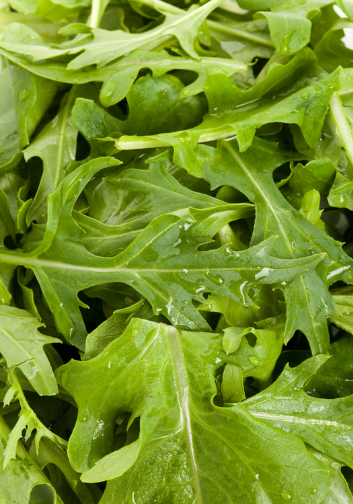
When to Plant?
This will be determined by your planting zone. There is a final frost date for each area. As a result, you can plan your gardening activities around this date. Check our Frost Dates Across North America: First & Last Frost Dates Chart. However, the date will not be the same for every plant.
How to Plant
Use row covers to protect very early plantings from cold, to protect young plants from insects, and (supported by hoops) to shade crops when warm weather arrives.
Make succession plantings every week or two, and grow several varieties with different maturity dates for a continuous supply. Moisture, stress, and high temperatures, particularly at night, encourage bolting. As the season progresses, plant more bolt-resistant varieties. Locate plants where they will be partially shaded by taller nearby plants, latticework or other screen.
Greens typically have shallow root systems. Keep soil moist to keep plants growing continuously. Mulch to retain moisture and suppress weeds (unless slugs are a problem). Fertilizing can be helpful to promote faster growth, especially a fish emulsion type that is not high in nitrogen that can cause greens to become bitter. Water lightly but consistently. Do not let soil get dried out.
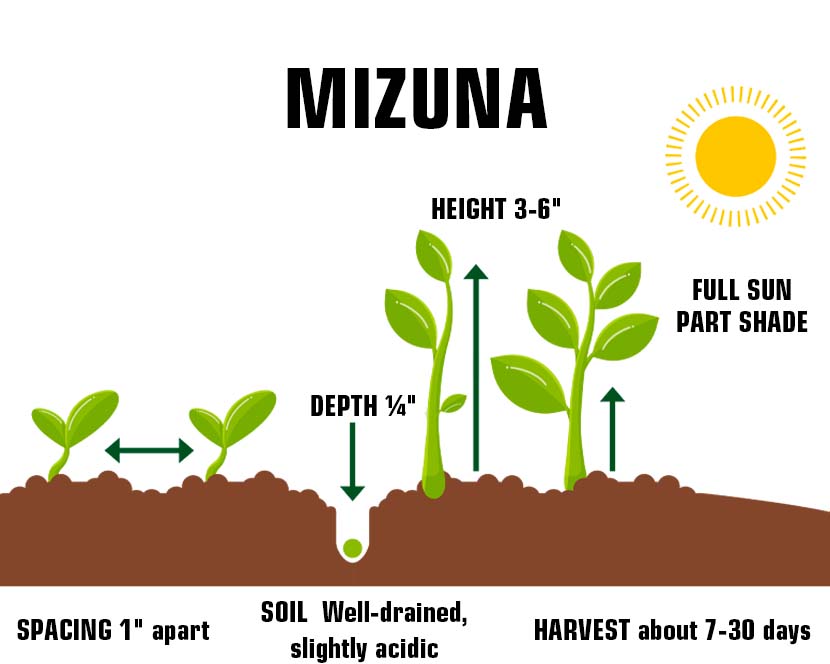
How to Cultivate
For fall crops, time maturity around time of first expected frost. Mature plants aren’t as tolerant of freezing as seedlings.
After intense harvesting (whole plant), it is a good idea to fertilize plants with an all-purpose fertilizer such as fish emulsion to help promote new growth. As always, avoid applying fertilizer directly to plant or leaves.
How to Harvest
Most baby green varieties can be harvested once they are about 3-4″ tall. Time required to reach this height may vary considerably depending upon variety and local conditions. Warmer temperatures and ample moisture will generally result in faster germination and early grow, but can cause bolting (and bitter greens taste) later on.
Leaves can be harvested individually at any point with a scissor, snip or by hand. Just be careful to avoid tearing if collecting by hand.
Hydroponics
Germination: Start by germinating your mizuna seeds. Place them in a small container with damp paper towels or use a seed germination kit. Keep the seeds in a warm and dark place until they start to sprout.
pH range: The pH range for growing mizuna hydroponically should be between 5.5 and 6.5. Use a pH meter to monitor and adjust the pH level of your hydroponic solution.
EC: Mizuna prefers a moderate level of electrical conductivity (EC) in the hydroponic solution. Keep the EC range between 1.2 and 2.5.
PPM: The recommended PPM (parts per million) for growing mizuna hydroponically is between 840 and 1750. This is the concentration of nutrients in the hydroponic solution.
Humidity: Mizuna prefers high humidity levels of around 60-70%. Use a humidifier or mist the plants regularly to maintain humidity levels.
Light hours: Mizuna needs around 12-16 hours of light per day for optimal growth. Use LED grow lights to provide consistent light and adjust the distance from the plants as they grow.
Temperature air: The ideal air temperature for growing mizuna hydroponically is between 18-25°C (64-77°F). Keep the temperature consistent to avoid stress on the plants.
Temperature water: Mizuna prefers a hydroponic solution temperature of around 20-22°C (68-72°F). Use a water heater or cooler to maintain a consistent temperature.
With these guidelines, you should be able to grow healthy plants hydroponically. Good luck, and happy growing!

